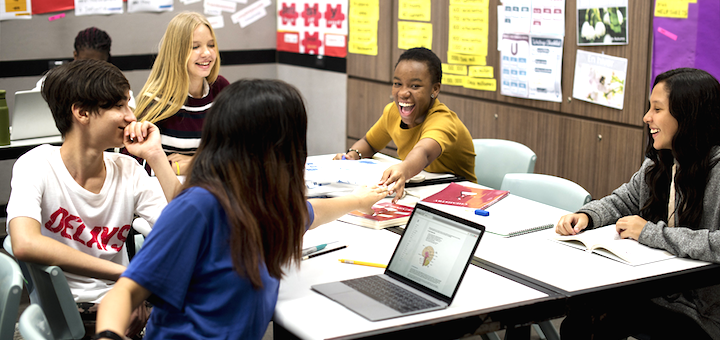How to Make Remote Learning More Engaging
The global shift to online education has revolutionized how students and teachers interact. While remote learning offers flexibility and accessibility, it also poses significant challenges—chief among them being engagement. Without the structure of a physical classroom, students often struggle to stay motivated, focused, and connected.
Educators and institutions must rethink their approaches to ensure students don’t just log in—but truly learn. In this blog, we’ll explore effective strategies to boost remote learning engagement, enhance student interaction, and create more dynamic virtual classrooms.
Why Remote Learning Engagement Matters
Engaged students are more likely to retain information, participate actively, and succeed academically. In a remote setting, however, distractions are abundant: social media, video games, noisy environments, and the ever-tempting “mute” button. Add in feelings of isolation or tech fatigue, and it’s easy to see why engagement drops.
Without strategic effort to promote active participation, remote learning risks becoming passive and ineffective. The good news? With the right tools and techniques, online learning can be just as interactive and impactful as in-person education.
1. Set Clear Expectations and Routines
Structure is critical for engagement. Students thrive when they know what to expect.
- Use consistent schedules: Set a fixed timetable for live classes, discussions, and assignment deadlines.
- Create a digital classroom code of conduct: Outline expectations for attendance, participation, and online behavior.
- Provide an agenda at the start of each session to help students follow along and stay focused.
When learners know the flow of each session and their responsibilities, they’re more likely to stay on task.
2. Leverage Interactive Tools and Technology
Modern educational technology offers powerful tools to foster interaction and collaboration.
Recommended Tools:
- Kahoot! or Quizizz for live quizzes and polls.
- Padlet or Jamboard for collaborative brainstorming.
- Google Docs or Notion for real-time group work.
- Breakout rooms in Zoom or Microsoft Teams for small group discussions.
Encourage students to use emojis, reactions, or chat features to express opinions and ask questions. These small interactive elements go a long way in building connection and engagement.
3. Use a Variety of Media Formats
Staring at slides or listening to long lectures leads to fatigue and disengagement. Instead, mix things up!
- Videos: Use short clips, tutorials, or animations to explain concepts.
- Images and infographics: Break up dense content with visual aids.
- Audio: Include podcasts or voice notes for students who learn better by listening.
- Games and simulations: Use educational games to turn abstract topics into interactive experiences.
By appealing to multiple learning styles, you keep students engaged and improve retention.
4. Make Learning Student-Centered
When students feel like active participants rather than passive recipients, engagement improves dramatically.
Ways to Involve Students:
- Let them choose project topics or research questions.
- Host student-led presentations or debates.
- Invite learners to create and share their own quizzes or study guides.
- Involve them in setting classroom norms or assessment rubrics.
Giving students voice and choice increases their investment in the learning process.
5. Incorporate Real-Life Relevance
Remote learners often ask, “Why do I need to know this?” Tie lessons to real-world problems or experiences to answer that question and spark curiosity.
- Discuss current events related to your subject.
- Assign tasks that involve community research or family interviews.
- Connect academic content to career paths or global issues.
Real-life relevance turns abstract lessons into something meaningful—and memorable.
6. Build Strong Teacher-Student Relationships
Students are more likely to stay engaged when they feel seen, heard, and valued by their teacher.
Build Connection by:
- Greeting students by name at the start of class.
- Scheduling one-on-one check-ins or “office hours.”
- Sending personalized feedback on assignments.
- Acknowledging birthdays, achievements, or milestones.
In a remote setting, these small gestures go a long way in humanizing the learning experience and keeping students emotionally connected.
7. Foster Peer Interaction
Learning is social. Isolation is one of the biggest challenges in remote education, so create opportunities for peer engagement.
- Host group projects or study pods.
- Use discussion forums or message boards.
- Start a “virtual buddy” system for support and accountability.
When students collaborate, they feel part of a community—boosting both motivation and learning outcomes.
8. Use Formative Assessments Frequently
Frequent low-stakes assessments help measure learning and maintain attention.
Try:
- Live polls and quizzes during sessions.
- Exit tickets asking students to summarize key points.
- Reflection journals submitted weekly.
- Interactive games like “Jeopardy” or “Bingo” based on course content.
Assessment isn’t just for grading—it’s a tool for engagement and feedback.
9. Keep Sessions Short and Dynamic
Attention spans online are shorter than in the classroom. Long lectures or monologues can lead to zoning out.
- Break lessons into 10–15 minute segments.
- Alternate between instruction and interaction.
- Use the “chunk and chew” method: present a concept, then give students time to process and apply it.
Also, don’t be afraid to include a short break or stretch session during longer classes.
10. Celebrate Progress and Success
Recognition and encouragement motivate students to stay engaged.
- Create a “Student of the Week” feature.
- Share shout-outs in newsletters or during class.
- Use digital badges or certificates for achievements.
- Celebrate milestones like completing a unit or improving participation.
Positive reinforcement is powerful, especially in remote environments where students might otherwise feel disconnected.
Challenges to Remote Learning Engagement (and Solutions)
1. Technical Issues
Many students face unreliable internet, outdated devices, or limited access.
Solution: Offer asynchronous options, low-bandwidth materials, and tech support resources.
2. Digital Fatigue
Spending hours in front of a screen can drain attention and motivation.
Solution: Integrate off-screen activities like reading, journaling, or hands-on tasks.
3. Lack of Motivation
Without face-to-face accountability, some students disengage.
Solution: Set short-term goals, reward effort, and involve parents or guardians in the process.
Final Thoughts
Remote learning engagement requires creativity, empathy, and adaptability. While online education poses unique challenges, it also offers endless opportunities to redefine what learning looks like.
By focusing on interaction, relevance, and student-centered practices, educators can make remote classrooms vibrant and effective. The goal isn’t just to get students to show up—but to get them to care, participate, and thrive.



